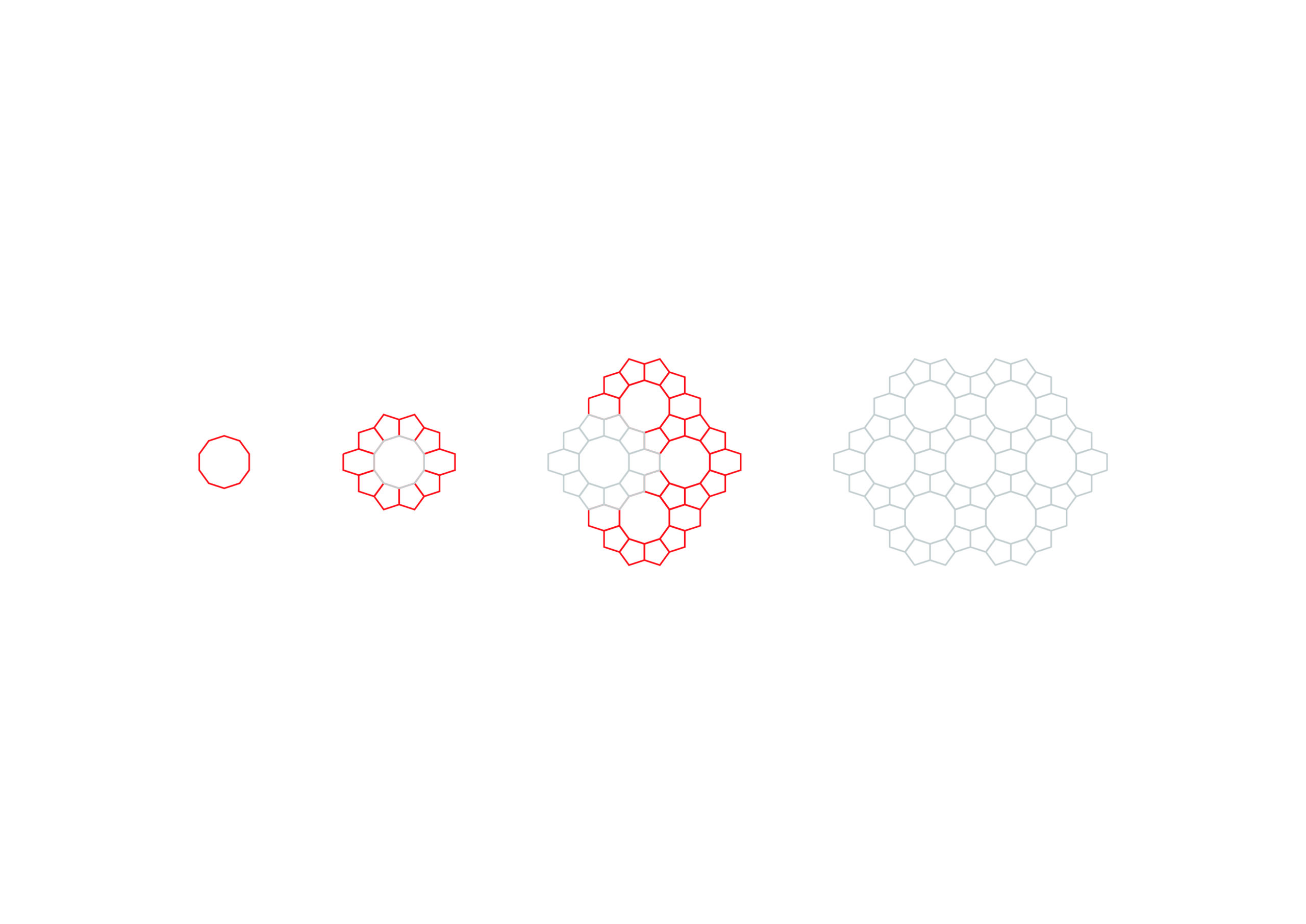ISLAMIC GEOMETRIC PATTERNS – CATEGORIES
Despite their complexity, Islamic geometric patterns typically fall under one of three primary categories: Fourfold, fivefold or sixfold patterns. These pattern types are based on the internal lines of symmetry found within them. When starting a pattern, a circle is drawn. This circle is then split into equal parts and depending on the number of these parts, either four, five or six, different distinctive characteristics appear. Generally speaking, one can tell the class the pattern falls into from the number of petal-shaped pieces which surround the central ‘starburst’, and the grid in which it resides. A star with six rays, or visually surrounded by six ‘petals’, belongs in the sixfold category. Sixfold patterns fit within a hexagonal grid. A star surrounded by eight ‘petals’ is part of the fourfold category – these exist on a regular squared grid.
Unlike with sixfold’s grid of hexagons, and fourfold’s grid of squares, pentagons – the shape derived from fivefold patterns – cannot form a grid from itself alone. Instead, other shapes must be added to allow for tessellations to occur. These patterns may seem far more complex. However, when broken down into its primary elements, they are relatively easy to follow.
FOURFOLD
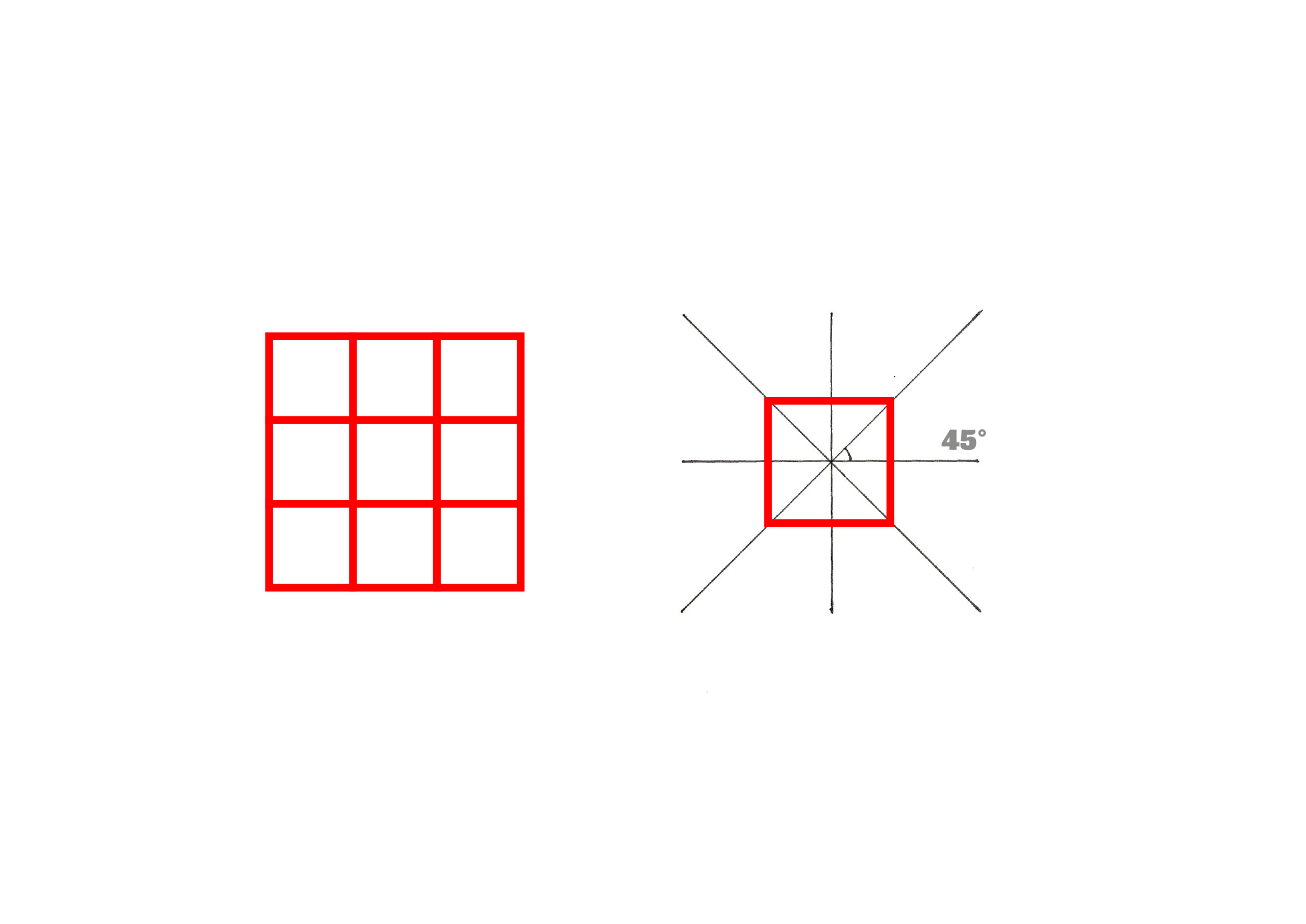
SIXFOLD
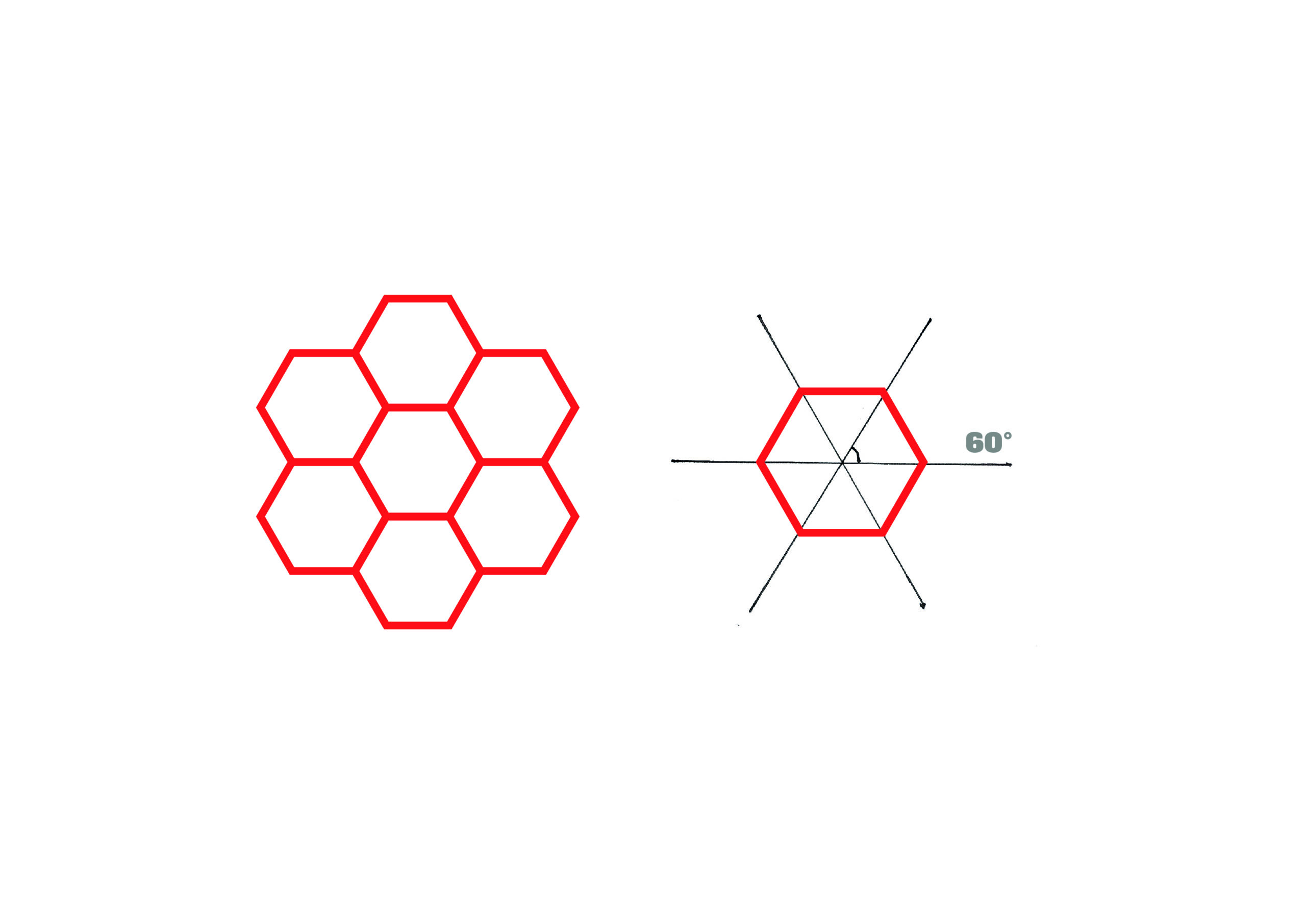
FIVEFOLD
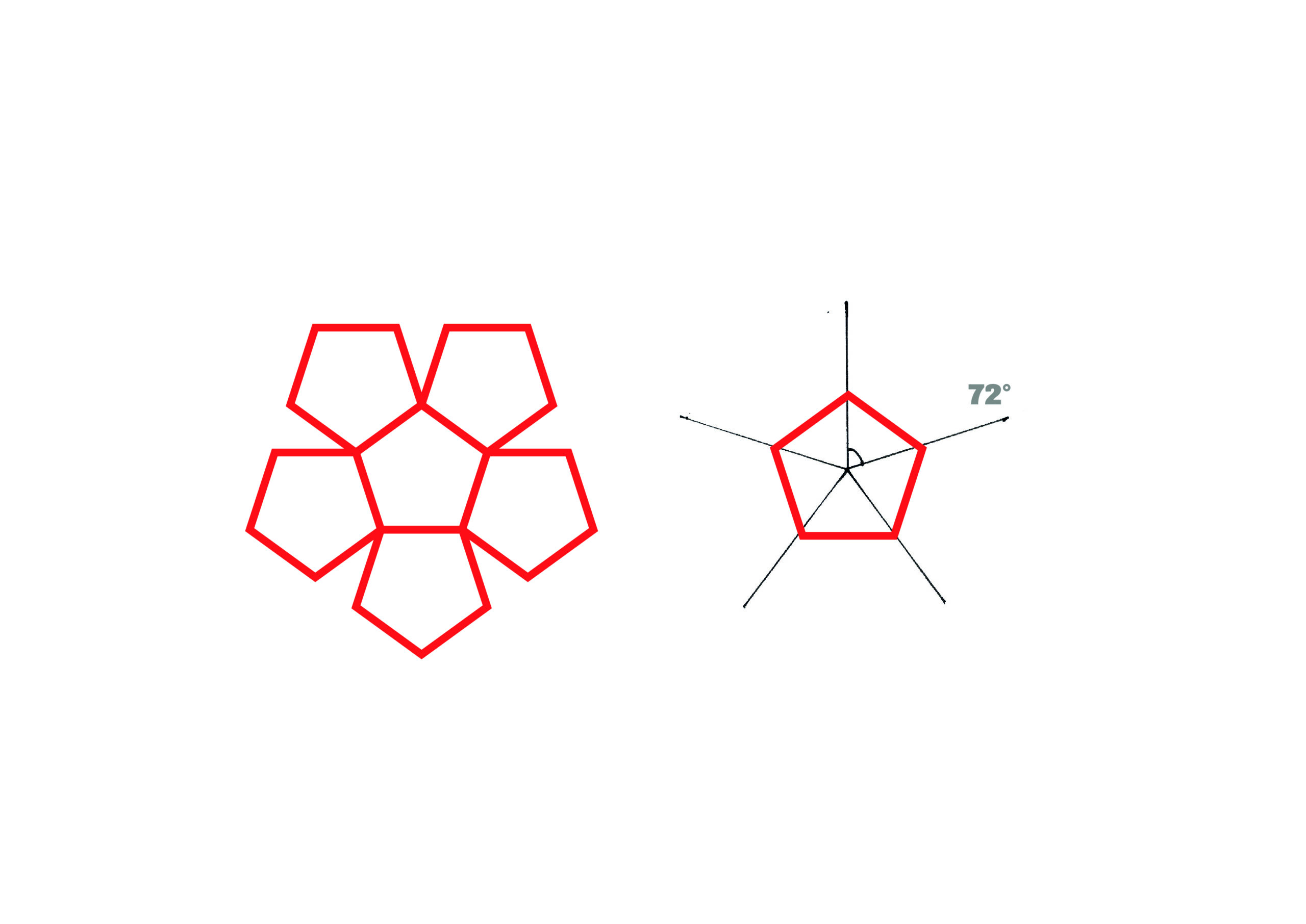
FIVEFOLD’S FAILURES IN TESSELATION
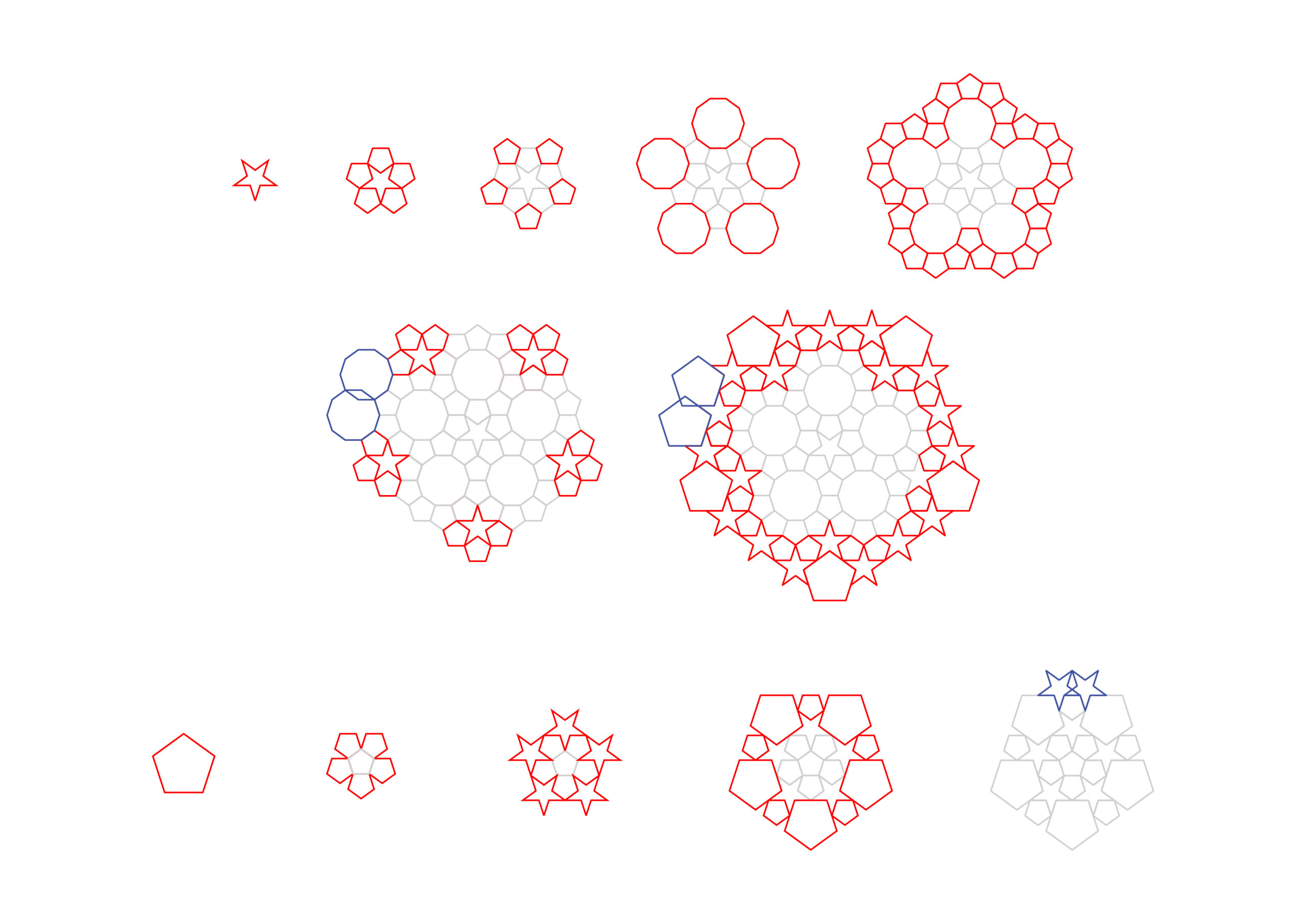
FIVEFOLD’S SUCCESS IN TESSELATION
